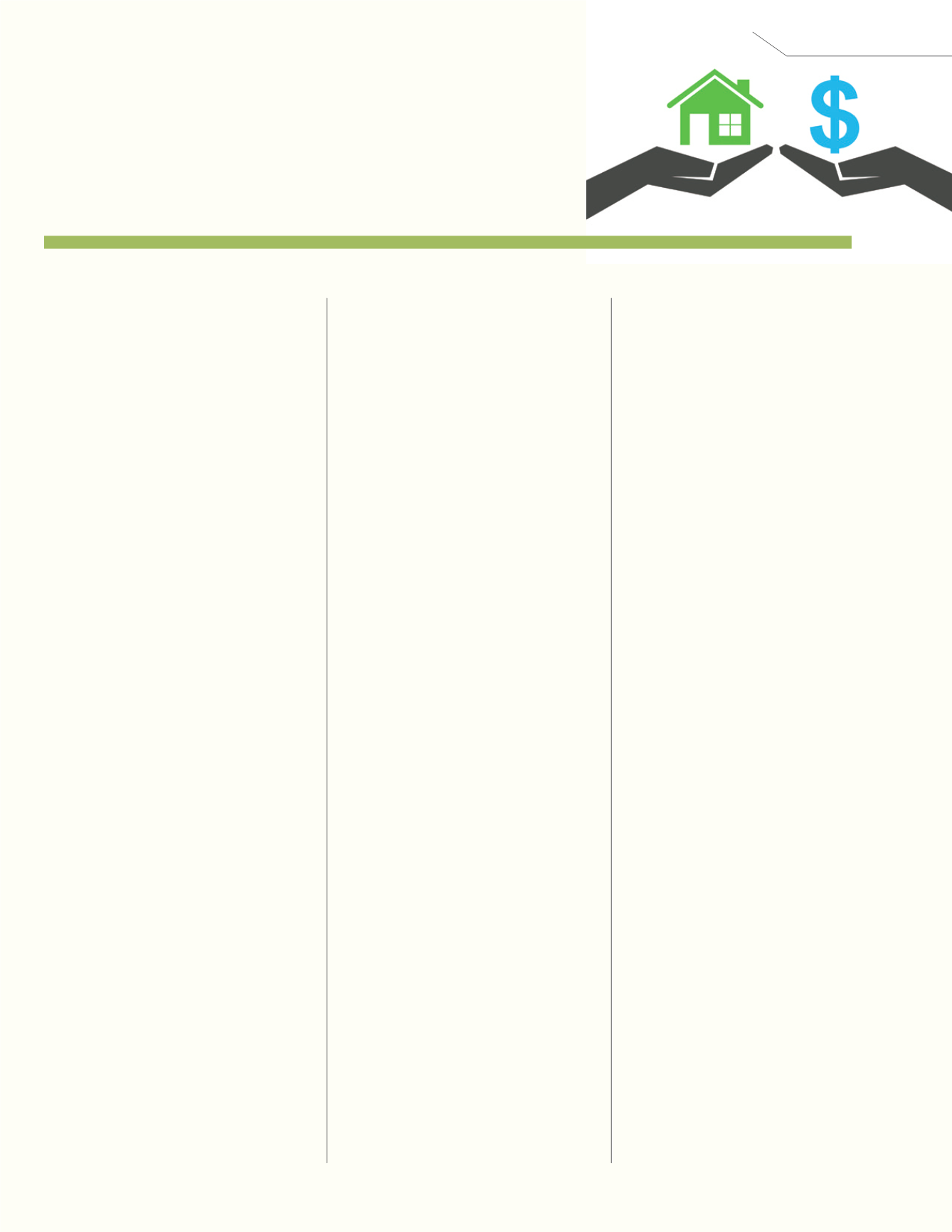
BANK ON IT
THE FUTURE OF THE
HOUSING FINANCE SYSTEM
NAHB Website Eye On Housing
T
he future of the housing finance
system is a key issue for the housing
industry as well as the economic
makeup of the middle class, given the
importance that housing wealth and access
to rental housing plays in our economy.
These factors and the policies that shape
them are of such significant importance that
this topic has been selected as a primary
issue for NAHB’s 2014 legislative conference,
“Bringing Housing Home,”which takes place
March 17-21 as home builders and other
members of the residential construction
industry meet federal lawmakers. As part of
this event, this week we have examined labor
issues and housing-related tax policy. In this
last post, we examine housing finance.
The housing Government Sponsored
Enterprises (GSEs) — Fannie Mae, Freddie
Mac and the Federal Home Loan Banks
(FHLBanks)—have been, and remain, critical
components of the U.S. housing finance
system. They were created by Congress to
support mortgage market liquidity and help
address affordable housing needs.
With Fannie Mae and Freddie Mac still
operating under conservatorship, serious
housing finance reform policy discussions
are underway in Congress. While many
approaches exist that would determine the
future of the system, nearly everyone agrees
that reform is critical for housing and the
economy. NAHB has made recommendations
to Congress outlining a plan by which Fannie
Mae and Freddie Mac would gradually be
phased into a private-sector-oriented system,
where the federal government’s role is clear,
but its exposure is limited. Federal support
should be limited to catastrophic situations
where carefully selected levels of private
capital and insurance reserves are depleted
before any taxpayer funds are employed to
shore up the mortgage market.
The future of housing and the middle class
are at stake. For example, while significant
declines for the nation’s homeownership
rate – 65.1% for 2013 - may have ended, the
impacts of the Great Recession on younger
homebuyers is clear. The homeownership
rate of those aged 35-44 today, a key group
in terms of housing demand, has fallen
below the overall homeownership rate.
Today’s 35-44 cohort has a homeownership
rate of 60.9% as of the fourth quarter of
2013, compared to approximately 65%
for the overall population. And this marks
a significant decline from the 70% rate for
those aged 35-44 in 1982.
These trends are consistent with more recent
housing data suggesting declines and delays
of first-time homebuyer purchases. Rising
interest rates have reduced affordability for
some of these buyers, which means having
to increase downpayments or alter home
price budgets. Policy changes that would
further increase the cost of purchasing a
home would further set back these younger
buyers, as well as have broader impacts for
the overall housing market and the economy
as a whole.
It is important to remember the importance
that housing provides, not just as a source
of shelter, but also a key component of
household and national wealth. Housing
is a capital good and part of the nation’s
capital stock and infrastructure. And as prior
NAHB research has demonstrated, primary
residences represent the largest asset category
on the balance sheets of households. At
$20.7 trillion, primary residences accounted
for almost one-third, 30%, of all assets held
nationally by households in 2010. Policy
changes that would harm the housing
market would have significant impacts for
the economy as a whole. It would take only a
6% decline in housing prices to eliminate $ 1
trillion in national wealth.
Primary residences represented 62% of the
median homeowner’s total assets and 42%
of the median home owner’s wealth. In
addition, the median value of the primary
residence across all households (including
renters, so the median household is not the
median owner-occupier) was $100,000. In
contrast, the median values of financial assets
and vehicles were only $17,000 and $12,200
respectively across all households.
Housing wealth is also a widely held asset.
Two out of every three households, 67%,
owned a primary residence in 2010 while
just over half of households, 50%, held a
retirement account. Meanwhile, 16% of
households owned either stocks or bonds.
Equity in residential property tends to be
a particularly important component of
wealth for lower-income, older households.
For 75+ households with incomes under
$35,000, the median share of net worth
held as equity in a primary residence is
60 percent.
For these reasons, the future of the federal
housing finance system, and by extension
homeownership, is a key issue going
forward for housing and the residential
construction sector.
+
Spring 2014 — Quad Cities Builders & Remodelers Association
13


